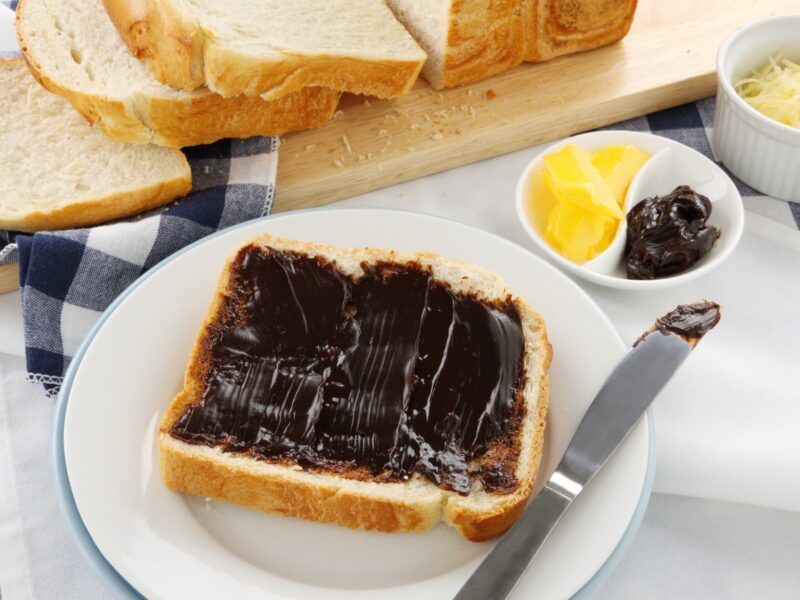Ever wanted to be able to make your own vegemite more affordable, healthier, or tastier? If you are feeling adventurous and enjoy an authentic Vegemite experience, you can make it at home yourself. How to make Vegemite at home?

This blog will tell you about this favorite Australian food. You can make it at home. It is easy and healthy. The taste is traditional, too.
Making Your Own Vegemite
Vegemite has a mixed reputation. Some people adore it, while others despise it. Those who enjoy the spread swear by it, but those who do not care for its salty and somewhat bitter flavor stay away from it entirely.
Why do you want to make your own Vegemite?
Although vegemite is commonly manufactured as a factory product, some prefer making their home version using yeast extract.
There are several reasons why people want to make their own. Some of these are listed below.
It may be cheaper to prepare at home than buy from shops or other sources. The price has increased considerably lately, so people who want to save money prefer making their own.
Making your own version is often an experiment that can lead to the secret recipe.
Vegemite is a rich source of B vitamins essential for human health. If you have a family member with low levels of these, it may be easier to prepare them at home instead of getting them supplements daily.
For some people, it might be too salty. And that gives risks to several health conditions. By making your low-salt version, you can control the saltiness and increase or reduce other flavors.
Making your own spread also means ensuring it is suitable for your diet. You can create healthier, less salty, vegan, gluten-free, tastier, or other versions.
People give many other reasons when they want to make their own.
What are the essential ingredients for making Vegemite at home?
There are simple ingredients required for making it at home. The main ingredient is yeast extract which gives the spread its unique flavor and taste.
You can use brewers yeast as in the original. However, the process can take ten days, not to mention the process is dangerous and hard to control and still doesn’t taste like the original.
The more straightforward way is using nutritional yeast flakes that you can find and process quickly. Besides this, you will need salt, spices like onions or garlic powder, and malt vinegar.
Other things that can be added to your version include brown sugar, honey, and different kinds of spices like cumin.
However, if you want to make a healthier and gluten-free version, below are the most common ingredients.
Nutritional yeast flakes
It’s known as fermented yeast flakes or Savory Yeast Flakes. It’s a fermented and deactivated yeast, which means it won’t grow (and has nothing to do with brewer’s or baker’s yeast). It contains a creamy, cheesy flavor, and I’ve used it in a few recipes to generate a cheese taste.
Nutritional yeast flakes are used by vegans as a condiment and cheese substitute, as well as to enhance their diet. It’s a complete protein and contains no sugar, dairy, grains, or gluten.
It’s distinct from yeast extract (MSG). Purchase from health food shops or the health food section of supermarkets.
Black tahini paste/spread
Black tahini paste is simply black sesame seeds ground to a smooth paste that gives the spread the appearance. Tahini is high in minerals, including phosphorus, lecithin, magnesium, potassium, and iron. It’s a good source of calcium, zinc, and vitamins E and B.
You may also prepare your own by lightly roasting black sesame seeds and processing them in a blender or food processor until you’ve reached a smooth paste.
Tamari
It’s a gluten-free version of soy sauce. It has more flavor than its Japanese counterpart and is often preferred over the latter.
Like black tahini paste, you may prepare tamari by fermenting organic brown rice syrup with water and sea salt. The mixture will be cooked until it’s reduced into a thick, dark sauce.
It’s usually recommended to add yeast extract and salt before adding other ingredients for taste balance.
Coconut oil
Coconut oil is a highly nutritious fat to cook with and bake with. Use unrefined, unbleached coconut oil that is an organic and extra virgin from non-GMO coconuts.
Because of its high saturated fat concentration, coconut oil has a high smoking point and is resistant to rancidity.
Coconut oil is claimed to aid digestion, especially irritable bowel disease, tummy bugs, candida, and parasites, due to the presence of short-term medium-chain saturated fatty acids (MCFAs), which is a good form of saturated fat.
Coconut aminos
It’s a great soy-free substitute for tamari and soy sauce. It’s made from the sap of coconut trees, has a sweeter fragrance than soy sauce, and is less salty. Coconut aminos are available in health food stores or online.
Apple cider vinegar
Because of its health advantages, Apple Cider Vinegar is utilized frequently in my recipes. Look for raw, unfiltered apple cider vinegar that has a milky appearance.
Avoid malt vinegar since they are produced from barley and include gluten.
Medjool date(s)
You may use Medjool dates if you like the taste and softness of these dates. There are no preservatives on these dates, which is a plus. They mix well with other recipe ingredients, adding a subtle caramel flavor to the final product.
Medjool dates are high in fiber, potassium, copper, manganese, magnesium, and vitamin B6.
How to Make Vegemite at Home?
These are two healthy, vegan, and gluten-free homemade recipes. One is the easiest recipe, and the other one has more flavors in the spread.
Let’s try to find which one you like more.
Easy Healthy Homemade Vegemite Recipe
Ingredients
- 200g black tahini
- 100g tamari or coconut aminos
- 15g nutritional yeast flakes
- 25g apple cider vinegar
Method
- Mix in a food processor in an old-fashioned way (using a bowl, spoon, and some elbow grease)
- Please keep it in the fridge and enjoy.
Healthy Gluten-free Aussie Spread
Ingredients
- 1/2 cup black tahini paste/spread
- 1/4 cup coconut aminos
- 3 Tbsp nutritional yeast flakes (aka savory yeast flakes)
- 2 tsp coconut oil
- 2 tsp apple cider vinegar
- 1 soft Medjool date(s), pitted
- 1 tsp cinnamon
- 1/4 tsp smoked paprika
- 1/2 – 3/4 tsp sea salt, add 1/2 tsp, taste, then add extra to your liking
Directions
- Thermomix, or blender, combines all the ingredients in a food processor. Process for 10 seconds.
- Remove the blade and scrape down the bowl’s inner walls. Continue blending for another 8-10 seconds until the paste is smooth with no dates remaining.
- Spoon the mixture into a sterilized glass jar or container.
- Serve the spread on paleo toast, and I like to top it with smashed avocado.
The spread will keep in the fridge for several months, but remember to use a clean knife each time (this will prevent contamination from other foods).
About Vegemite
If you are an Aussie or have friends who are, chances are they have shared the love with you. Vegemite is an iconic Australian spread that is just as popular at breakfast time as it is for lunch and dinner.
The salty taste can be off-putting to some people, but the benefits of this food item make up for any slight bitterness. It’s full of B vitamins that help boost your immune system and provide essential amino acids for good health.
Vegemite is a salty yeast extract prepared from brewer’s yeast waste (a by-product of beer production) and various vegetables such as celery sticks and spice additives. The black paste has a deep, dark crimson-brown color and is high in Vitamin B. It tastes like – well, let’s say that it’s an acquired taste.
The taste differs from an Australian kid’s Vegemite sandwich to an American youngster’s peanut butter and jelly lunch—but the effect is similar.
Vegemite is commonly served to Australian children since they are born. Australians are known to travel worldwide with at least one tiny jar in their luggage, afraid they will not be able to locate it.
Facts
- Every year, 22.7 million jars of Vegemite are made in Australia. That’s 235 jars per minute!
- For every jar that is exported, 30 are sold in Australia.
- In Australia, nine out of ten people have it in their pantries.
History of Vegemite
For his Kraft Walker Cheese Co. to market, in 1922, Melbourne, Australia resident Fred Walker (1884-1935) decided to try and create a unique “yeast extract” that was as tasty as it was nutritious.
Dr. Cyril P. Callister was the company’s chief scientist, and it was he who developed the first Vegemite spread. He created this paste by combining yeast from brewers with ingredients such as celery, onion, salt, and secret components.
Soldiers, sailors, and the general public of Australia all ate Vegemite in World War II. Soldiers received three sizes: seven-pound tins for the platoon, eight-ounce tins for soldiers on the move, and half-ounce rations for behind-enemy-lines operations.
Because of this wartime need, the supply for civilians was limited. As a result, adverts were used to clarify the issue:
In recent years, the salt content in this dish has been lowered from 10% to 8%.
J. Walter Thompson’s advertising campaign in 1954 boosted the popularity by launching a series of entertaining and catchy “The Happy Little Vegemite Song” commercials featuring groups of gleaming, attractive, healthy children singing the song.
The tune was first played on the radio in 1954 and then on television in 1956. The marketing campaigns lasted until the late 1960s.
The Australian Bega Cheese group had owned the Vegemite brand since January 2017, when it was acquired from Mondelez International (formerly Kraft Foods Inc.).
Kosher and halal certification
Kosher Vegemite was first produced in the 1980s. By 2010, all ordinary Vegemite jars and tubes were labeled kosher.
In 2010, Vegemite was halal certified.
Vegan certification
A long time ago, the people who made Vegemite said it was safe for vegans to eat. But it wasn’t until this year, World Vegan Day 2019, that they got the certification.
Vegemite Nutrition Information
One 5-gram (approximately one teaspoon) serving contains:
- Calories: 9
- Protein: 1.3 grams
- Fat: 0 grams
- Carbohydrates: 0 grams
- Fiber: 0 grams
- Sugar: 0 grams Vegemite is a good source of vitamins in the form of:
- Thiamin (Vitamin B1)
- Riboflavin (Vitamin B2)
- Niacin (Vitamin B3)
- Folate (Vitamin B9)
It has high levels of B vitamins. Doctors sometimes give it as a health supplement. It provides 25-50% of the recommended intake for these vitamins.
FAQs
What are the ingredients of Vegemite?
It is a hearty, black salty paste made from brewer’s yeast that has been left over. The yeast, along with salt, malt extract, B vitamins thiamine, niacin, riboflavin, folate, and vegetable extract, gives its distinctive flavor profile.
Why is Vegemite banned in the US?
Even to the point of searching for jars when Australians enter the country, the US has prohibited it. Joanna Scott, a spokesperson for Kraft, said: “The FDA doesn’t allow the import of Vegemite because the formulation includes folic acid.
How do you make Vegemite from homebrew?
Mix some veggies with the leftover homebrew, and let it simmer on low heat for about 4-5 hours. Add sugar and salt to taste. Once it’s thick, please put it in a Pyrex dish in the microwave for maybe 20 / 30 minutes to reduce moisture content.
See also: How to Get Vegemite Out of Clothes.











